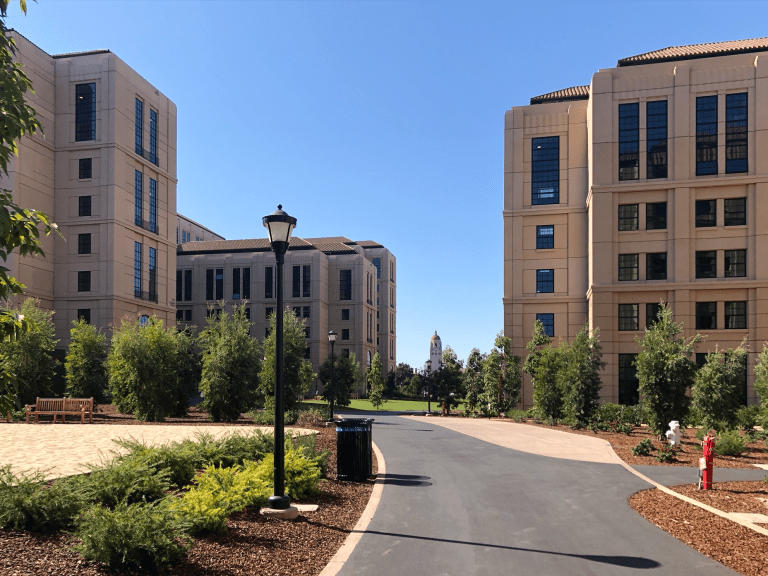Students at Stanford’s School of Medicine pulled off a University-compliant, socially distanced happy hour event on Feb. 5 — a model, students say, for how future student gatherings could take place on campus while still following safety guidelines.
As opposed to bending the rules, they followed administrative guidance to plan an in-person happy hour and peer mentorship event that took place on Feb. 5. The event in total drew around 150 participants, split up into groups of no more than six students.
Omair Khan, a first-year medical school student and a social chair of his class, said careful planning, contact tracing and guidance from the medical school administrators led to what he believes was a safe event.
“We’ve tried to think and come up with new innovative ways to make communities,” he said.
The event stands in contrast to multiple recent campus gatherings that took place in violation of University and county health directives. This includes reports of ongoing rule-bending among GSB students and 100-person outdoor parties, and the University hit a new record for weekly student COVID-19 cases in January.
Such gatherings were cited in a controversial memo by Associated Students of Stanford University executives that recommended the University not open to juniors or seniors for spring quarter.
According to Khan, participants had to pre-register with a group of up to six other students prior to the event and indicate their preferences for drinks and snacks. Khan and his fellow social chair Andrew Berneshawi M.D. ’24 then sent individual emails to each group confirming their members and preferences and determined staggered pickup times for food.
Khan said that they also had to coordinate which outdoor location each group went to after picking up their food to avoid groups being too close to each other and potentially merging into a larger group.
“It’s logistically been challenging because normally we just meet up at a field in a non-COVID era with a bunch of drinks and just kind of have a free-for-all,” Khan said. “It is a little more back-end work, but I think it’s worth it for the better so people don’t screw this up by… hosting a super spreader.”
Medical school spokesperson Becky Bach confirmed that “small, outdoor, socially distanced, masked academic advising gatherings are permitted if individuals have completed a Health Check screening. Students are expected to stay in groups of 15 or fewer students and one student is assigned to track attendance.”
Students who attended the event said that they thought it was a safe way to get to know their peers better and bond as a class, which they said was especially important given the recent passing of their classmate.
First-year medical student Brian Sweeney said the classmate’s death “shook the entire med school pretty hard.” He thinks that implementing safe in-person events helps provide community and an outlet to talk that students need.
Sweeney added that everyone at the event wore masks when they were not eating and tried to maintain distance. He also said that the vast majority of medical students have been vaccinated.
“It doesn’t give us any more leeway than the rest of the students here,” he said, “but it does give us kind of that added level of security.”
Matt Grieshop, a second-year med student who also attended, agreed that the event was important for students’ wellness. He said that the gathering provided an opportunity for mentorship, referencing second-year students meeting with first-years to guide them through their studies.
He recalled hearing two first-year students tell each other “it’s so nice to meet you in person” while walking by another group. With sadness in his voice, he commented that it took until February for words like those to be said.
This article has been clarified to reflect that students followed the guidance of University administrators when planning the event but did not directly consult them.
Contact Sam Catania at news ‘at’ stanforddaily.com.
